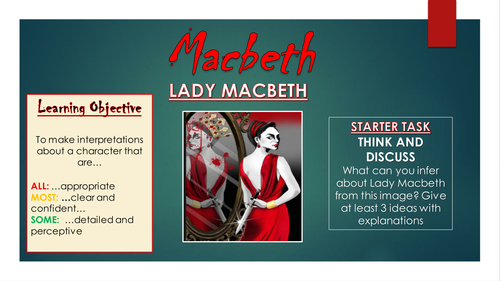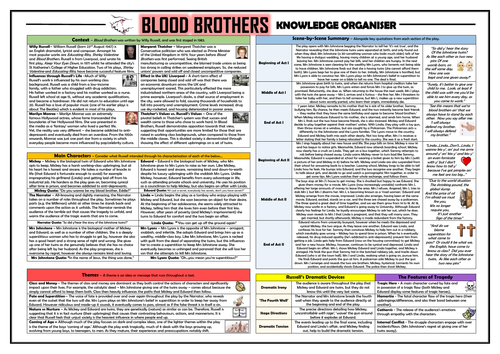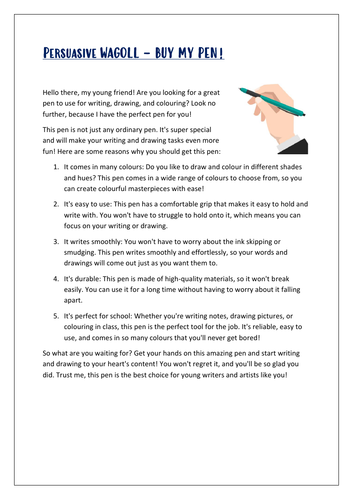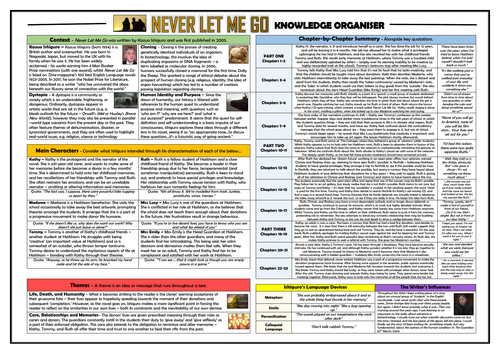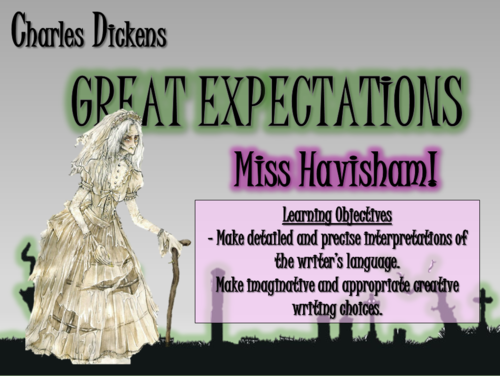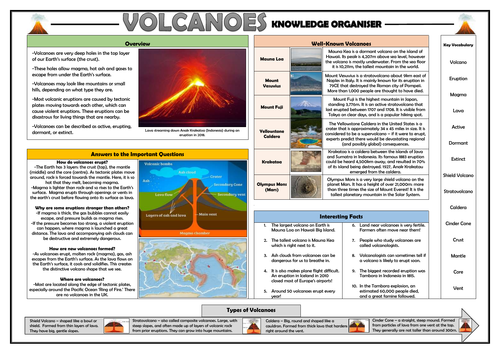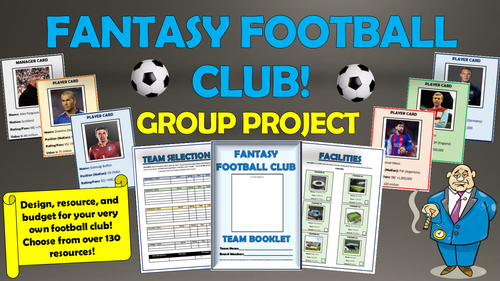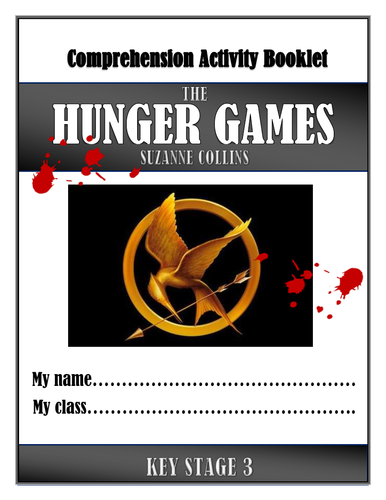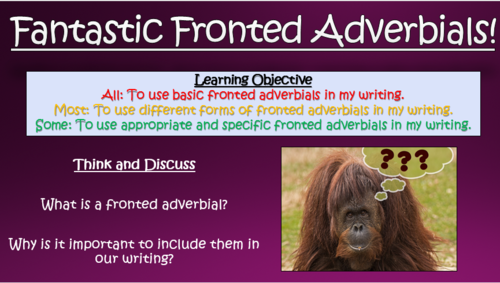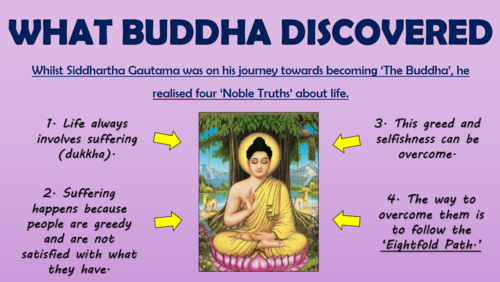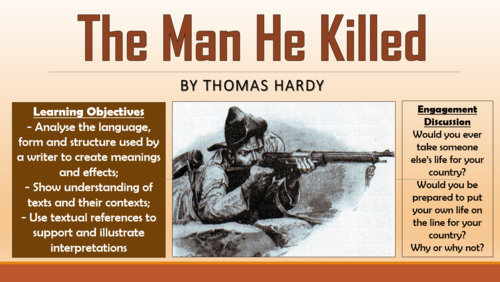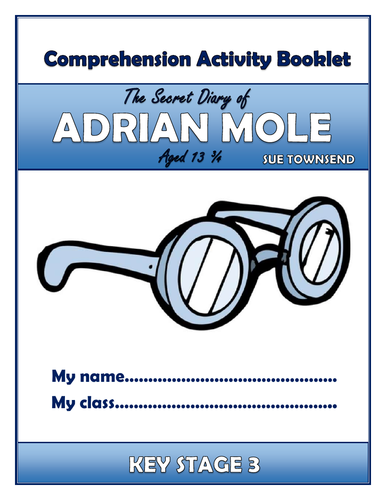
3k+Uploads
1905k+Views
2237k+Downloads
All resources
Bundle Sale

Rooftoppers - Big Bundle!
This ‘Rooftoppers’ bundle contains all of the ‘Rooftoppers’ lessons, the detailed knowledge organiser, and the 22-page comprehension activity booklet.
The engaging and thought-provoking series of lessons has been devised to provide students with a well-rounded, secure understanding of the text. Ten resource sets are included, each of which will take approximately 2-3 lessons to deliver.
Chapters 1-3
Chapters 4-6
Chapters 7-9
Chapters 10-12
Chapters 13-15
Chapters 16-18
Chapters 19-21
Chapters 22-25
Chapters 26-28
Chapters 29-31
The comprehensive and colourful PowerPoint presentations guide students through a wide range of activities, including those designed to enhance the following skills: retrieval, understanding vocabulary, inference, explanation, summarising, sequencing, analysis and deeper thinking activities. Additional worksheets and templates are also provided where needed for some of the creative tasks.
All of the resources and tried and tested in real classrooms, catalysing excellent outcomes. The resources are suitable for students across KS2 (I originally used them with year 5 and 6 classes).

Macbeth: Lady Macbeth
This engaging and interesting lesson aims to improve students’ understanding of one of the key characters in William Shakespeare’s Macbeth: Lady Macbeth. In particular, they learn to make insightful interpretations about the character, and are enabled to draw links between Lady Macbeth and their knowledge of women in Shakespearean times.
The lesson utilises a range of tasks, that require students to be visual and interactive learners. It follows this learning journey:
- Inferring key information about the character of Lady Macbeth from picture clues;
- Identifying and ordering the key events in the text in which Lady Macbeth is involved;
- Understanding her role in the rise and downfall of Macbeth;
- Comparing and contrasting between her character and the expected role of women at the time the play was written;
- Analysing Shakespeare's development of Lady Macbeth as a key character throughout the text;
- Evaluating the learning in the lesson.
Included in this resource pack are:
- A well-presented, thorough, and informative, whole-lesson PowerPoint presentation;
- Resources for the sequencing activity, detailing Lady Macbeth's numerous actions throughout the play;
- A template to help scaffold the main task, complete with P.E.E instructions;
- A comprehensive teacher guidance form/lesson plan to assist delivery.
All images in this resource are licensed for commercial use, and are cited on the final slide of the lesson presentation.

Blood Brothers Knowledge Organiser/ Revision Mat!
This detailed and visually-appealing resource offers a complete reference point for students learning or revising Willy Russell’s ‘Blood Brothers.’ It contains comprehensive sections on:
Context;
Scene by Scene Summary (with quotes);
Main Characters;
Themes;
Russell’s Dramatic Devices;
The Features of Tragedy.
Key words and ideas are underlined for easy reference. The resource is designed to be printed onto A3, and is provided as both a PDF and a Word version (so that you can edit if you want to). All images used are licensed for commercial use and are cited on a separate document (included).

Locational Knowledge - United Kingdom - Knowledge Organiser!
This clear, detailed and visually-appealing resource offers a complete reference point for students revising knowledge relating to the United Kingdom, as a part of locational knowledge in geography. It contains comprehensive sections on:
Overview and map;
Counties and Cities of the UK;
Longest Rivers;
Highest Mountains;
Human Geography Features;
Physical Geography Features.
The resource is designed to be printed onto A3, and is provided as both a PDF and a Word version (so that you can edit if you want to). All images used are licensed for commercial use and are cited on a separate document (included). The resource is most suitable for students in KS2 or lower KS3.
Bundle Sale

To Kill a Mockingbird Huge Bundle!
THIS BUNDLE CONTAINS ALL OF THE ‘TO KILL A MOCKINGBIRD’ LESSONS, IN ADDITION TO THE KNOWLEDGE ORGANISER, THE 30-PAGE COMPREHENSION BOOKLET, AND THE POINTLESS GAME!
This engaging, varied, and informative scheme of learning is designed to help students gain understanding, assessment skills, and key interpretations of Harper Lee’s novel ‘To Kill a Mockingbird.’ Made up of a wide-range of interesting and exciting lessons, students should complete this scheme having gathered vital skills in: interpreting the significant meanings of the novel, understanding the writer’s ideas within the text, analysing key characters, settings, and themes, and understanding Lee’s language devices.
Stimulating, visual, and easily adaptable, these lessons provide suggested learning objectives and outcomes for students of a wide-range of abilities - The vast majority of tasks are differentiated to allow for different abilities and needs in your classroom. Each lesson loosely follows this logical learning journey to ensure that students learn in bite-size steps:
Engaging
Defining/ Understanding
Identifying/Remembering
Analysing/ Creating
Peer or self evaluating.
All of the lessons are interactive, employ a variety of different teaching and learning methods and styles, and are visually-engaging. Resources, worksheets, and lesson plans are all provided.

Pigeon English - Comprehension Activities Booklet!
This resource booklet contains a wide range of age-appropriate, engaging, and meaningful comprehension activities for use throughout the reading of Stephen Kelman’s ‘Pigeon English.’ Teachers have found them particularly useful in exam revision, comprehension tasks, or guided reading sessions.
They are perfect for aiding the progress of students towards meeting the KS4 expectations within the National Curriculum framework - this makes the tasks suitable for all examining bodies. Students have found these resources extremely engaging, and for teachers there is explicit information within each task regarding which comprehension strands the task is designed to demonstrate.
They also relate to key extracts, characters, and themes from the story, ensuring that students gain a deep understanding of the text.
Activities within the booklet include:
'Context: Modern Britain - to aid students with ‘Drawing on knowledge of the purpose, audience and context of the writing, including its social, historical and cultural context and the literary tradition to which it belongs, to inform evaluation;’
‘Kelman’s Description’ - to aid students with ‘Analysing a writer’s choice of vocabulary, form, grammatical and structural features, and evaluating their effectiveness and impact;’
‘X-Fire’ and ‘Lydia’ Profiles - to aid students with ‘Seeking evidence in the text to support a point of view, including justifying inferences with evidence;’
‘Editing the Text’ - to aid students with ‘Making an informed personal response, recognising that other responses to a text are possible and evaluating these.’
Plus many, many more activities (the booklet is around 30 pages in length!) I’ve also added it as a PDF in case the formatting differs on your computer.
All images are licensed for commercial use, and are cited on a separate document (included).

KS2 Persuasive Writing Example Texts! (WAGOLLs)
This original, imaginative and purposeful range of WAGOLL (what a good one looks like) texts have been created to provide model examples of effective persuasive writing.
There are eight original example texts in total, modelling good practice for a varied range of persuasive activities. They include:
Buy My Pen
Visit the Maldives
Letter Against A New Heathrow Runway
Dragon’s Den Pitch - Lemonade Stand
Roald Dahl - The Best Author Ever
Stay at the Old Swan, Monkton
Make Sure You Recycle
Let’s Stop Bullying Together
Each example contains a range of apt persuasive devices, for example rhetorical questions, lists of three, personal pronouns, compounding connectives and many more.
Each of the texts is provided as PDFs (to protect the original formatting) and as Word files (in the zip folders - so that you can edit if you want to).

Never Let Me Go Knowledge Organiser/ Revision Mat!
This detailed and visually-appealing resource offers a complete reference point for students learning or revising Kazuo Ishiguro’s ‘Never Let Me Go.’ It contains comprehensive sections on:
Context;
Chapter by Chapter Summary (with quotes);
Main Characters;
Themes;
Ishiguro’s Language Devices;
Influences on the Writer.
Key words and ideas are underlined for easy reference. The resource is designed to be printed onto A3, and is provided as both a PDF and a Word version (so that you can edit if you want to). All images used are licensed for commercial use and are cited on a separate document (included).

Great Expectations: Miss Havisham!
This engaging and informative lesson enables students to make detailed and precise interpretations of the language used by Charles Dickens in describing Miss Havisham in Great Expectations. In particular, students analyse the interesting vocabulary choices, similes, metaphors, and other language devices employed to depict Miss Havisham’s decayed appearance and surroundings, before utilising the techniques in a similar manner through their own vivid descriptions.
The lesson follows a step-by-step learning journey, in which children learn through:
- Defining and exemplifying each of the descriptive language devices;
- Reading extracts from 'Great Expectations' in which Miss Havisham is described, identifying the descriptive devices used;
- Precisely and in detail, analysing how Dickens uses each of the descriptive language devices for effect;
- Creating their own imaginative and appropriate descriptions of mysterious characters, using a wide range of descriptive language devices;
- Peer assessing each other's learning attempts.
Included is:
- Whole lesson PowerPoint - colourful and comprehensive;
- Extracts from Great Expectations;
- Cards for card-sorting activity;
- Analysis template with success criteria for creating well-structured responses;
- Blank character profile template;
- Model example character profile template;
- Writing to describe helpsheet;
- Comprehensive lesson plan.
All documents are attached as Word and PDF in case formatting differs on your computer.
There are also opportunities for group learning, peer assessment, and whole class discussion. This was originally taught to mixed ability year 10 groups, but can easily be differentiated for groups of different ages and abilities.
All images are licensed for commercial use, and image rights are listed on the last page of the presentation.

Dr Jekyll and Mr Hyde Knowledge Organiser/ Revision Mat!
This detailed and visually-appealing resource offers a complete reference point for students learning or revising Robert Louis Stevenson's 'Strange Case of Dr Jekyll and Mr Hyde.' It contains comprehensive sections on:
- Context;
- Chapter by Chapter Summary (with quotes);
- Main Characters;
- Themes;
- Stevenson's Language Devices;
- Gothic Features.
Key words and ideas are underlined for easy reference. The resource is designed to be printed onto A3, and is provided as both a PDF and a Word version (so that you can edit if you want to). All images used are licensed for commercial use and are cited on a separate document (included).

Volcanoes Knowledge Organiser!
This clear, detailed and visually-appealing resource offers a complete reference point for students learning or revising knowledge relating to volcanoes. It contains comprehensive sections on:
-Overview of Volcanoes;
-Answers to the Key Questions;
-Types of Volcanoes;
-Well-Known Volcanoes;
-Key Vocabulary;
-Key Facts.
The resource is designed to be printed onto either A4 or A3, and is provided as both a PDF and a Word version (so that you can edit if you want to). All images used are licensed for commercial use. The resource is most suitable for students in KS2 or KS3.

Fantasy Football Club Group Project!
A Russian billionaire, Asman Veryrich, has approached you about setting up a new football club!
This exciting, engaging investigation activity allows students to control the direction of their own learning, through speaking, listening, discussing, and reasoning. I initially created these resources to provide something interesting for the students to engage with for their English Speaking and Listening discussions, but it has since been used across Maths, Art and Design, and PSHE departments, as well as by form groups and holiday activity groups, to build teamwork and collaboration skills.
Students get involved in all of the fun aspects of designing and setting up a new football club, including selecting a team of players, a manager, a stadium, and a training ground. They also design the team's club badge and football kits. They also need to use their skills of literacy to read and understand key evidence, and skills of numeracy to ensure that they keep their expenses within budget! What is more, groups can compete against one another to create the most successful team in the league, as all of the resources that they choose can help them to acquire valuable league table points!
Included in this resource pack are:
- Full PowerPoint lesson talking students through the process;
- An 8 page team booklet, used to create their designs and calculate their budgets;
- A pack of 96 player cards and 12 manager cards to select from (a combination of new and classic footballers are included, to ensure that this will never be outdated);
- Budget and recording sheets to track their progress;
- An A3 football pitch to strategise and select their team.
Considering the time and effort that it took to create these resources, I think that they offer exceptional value. Whenever I have used this activity before, it has taken at least 3-4 lessons, including the introduction, design process, presentations, and evaluation. I originally have used this with mixed ability Year 9 and 10 groups, but colleagues have adapted it easily for students of all key stages.
All images have been cited at the end of the PowerPoint presentation and are licensed for commercial use.

The Hunger Games KS3 Comprehension Activities Booklet!
This resource booklet contains a wide range of age-appropriate, engaging, and meaningful comprehension activities for use throughout the reading of Suzanne Collins' 'The Hunger Games.' Teachers have found them particularly useful in comprehension or guided reading sessions. They are perfect for aiding the progress of children towards meeting the KS3 expectations within the new National Curriculum framework. Children have found these resources extremely engaging, and for teachers there is explicit information within each task regarding which comprehension strands the task is designed to demonstrate. They also relate to key extracts, characters, and themes from the story, ensuring that children gain a deep understanding of the text.
Activities within the booklet include:
- 'Links to the Historical Myth of Theseus and the Minotaur' - to enable students to demonstrate that they can: 'Know the purpose, audience and context of the writing and drawing on this knowledge to support comprehension.'
- 'Collins' Description' - to enable students to demonstrate that they can: 'Know how language, including figurative language, vocabulary choice, grammar, text structure and organisational features, present meaning.'
- 'President Snow' and 'Peeta Mellark' - to enable students to demonstrate that they can: 'Study setting, plot, and characterisation, and the effects of these.'
- 'Vocabulary Inspector' - to enable students to demonstrate that they can: 'Learn new vocabulary, relating it explicitly to known vocabulary and understanding it with the help of context and dictionaries.'
Plus many, many more activities (the booklet is over 20 pages in length!) I've also added it as a PDF in case the formatting differs on your computer.
All images are licensed for commercial use, and are cited on a separate document (included).

Fantastic Fronted Adverbials!
This engaging and detailed resource pack has been designed to make the learning of fronted adverbials (particularly prominent in the new curriculum) easily accessible, engaging and interesting for all children. Throughout the lesson, students learn to improve their skill at using appropriate, concise, and precise fronted adverbials within their own writing compositions. In addition to the comprehensive lesson, resources, and plan, it also includes a fronted adverbials writing mat to assist students in building their extended writing skills.
The lesson follows a clear, logical, bite-size learning journey, which guides students towards differentiated learning objectives. Over the course of this journey, they become able to:
- Define what fronted adverbials are;
- Identify fronted adverbials in sentences;
- Analyse and evaluate what it is that makes some fronted adverbials more effective than others;
- Write an extended piece with the employment of fronted adverbials;
-Peer/self-assess learning attempts.
This resource pack includes:
- A visually engaging whole-lesson PowerPoint presentation;
- A clear and interesting worksheet for the development task;
- An interesting short story for students to analyse;
- A hyperlink to an engaging and heart-warming video through a hyperlink in the presentation;
- A detailed lesson plan, complete with what the teacher and students should aim to achieve at each stage of the lesson.
All images are licensed for commercial use, and are cited on the final slide of the PowerPoint/ the bottom of worksheets.

The Buddha - The Eightfold Path!
In this engaging lesson, students gain a deeper understanding of the Noble Eightfold Path - the eight practices governing the lives of Buddhists.
The learning is guided by a clear and colourful PowerPoint presentation, which guides students through the following step-by-step journey:
-Defining what the Eightfold Path is;
-Breaking down the different practices that make up the Eightfold Path;
-Establishing why Buddhists follow the Eightfold Path;
-Thinking about how they can apply the principles of the Eightfold Path to their own lives;
-Considering a deeper thinking extension question;
-Completing a plenary to assess their understanding.
This resource pack contains a comprehensive Powerpoint, alongside an eye-catching worksheet.
In the past, I have used this lesson with children from across Key Stage 2 - the key learning is aligned with curriculum expectations for RE, and also the content prescribed by most diocese regions. All images are licensed for commercial use.

War Horse KS3 Comprehension Activities Booklet!
This resource booklet contains a wide range of age-appropriate, engaging, and meaningful comprehension activities for use throughout the reading of Michael Morpugo’s ‘War Horse.’ Teachers have found them particularly useful in comprehension or guided reading sessions. They are perfect for aiding the progress of children towards meeting the KS3 expectations within the new National Curriculum framework. Children have found these resources extremely engaging, and for teachers there is explicit information within each task regarding which comprehension strands the task is designed to demonstrate. They also relate to key extracts, characters, and themes from the story, ensuring that children gain a deep understanding of the text.
Activities within the booklet include:
‘Context: World War I’ - to enable students to demonstrate that they can: ‘Know the purpose, audience and context of the writing and drawing on this knowledge to support comprehension.’
‘Morpugo’s Description’ - to enable students to demonstrate that they can: ‘Know how language, including figurative language, vocabulary choice, grammar, text structure and organisational features, present meaning.’
‘Captain Nicholls Character Profile’ - to enable students to demonstrate that they can: ‘Study setting, plot, and characterisation, and the effects of these.’
‘Vocabulary Inspector’ - to enable students to demonstrate that they can: ‘Learn new vocabulary, relating it explicitly to known vocabulary and understanding it with the help of context and dictionaries.’
Plus many, many more activities (the booklet is 23 pages in length!) I’ve also added it as a PDF in case the formatting differs on your computer.
All images are licensed for commercial use, and are cited on a separate document (included).

The Man He Killed - Thomas Hardy!
This engaging, comprehensive lesson aims to improve students’ understanding of Thomas Hardy’s poem ‘The Man He Killed’ with particular focus upon the language, structure, and subject matter employed within the poem. By the end of the lesson, students demonstrate their knowledge of the text analytically, through assured, appropriate, and sustained interpretations.
The lesson follows a step-by-step learning journey, in which children learn through:
Considering the emotional impact of war on the individuas involvedl;
Securing contextual understanding of The Boer Wars and Thomas Hardy’s life and beliefs;
Reading and interpreting the poem, using a provided line-by-line analysis, and interactive group activities;
Developing their understanding through inferring and analysing key language and structural choices;
Analysing how the futility of war is conveyed through Hardy’s language and structure choices;
Self/ Peer assessing each other’s learning attempts.
Included is:
Whole lesson PowerPoint - colourful and substantial; (including hyperlinks to informative and videos)
Copy of poem (freely available online);
Deeper thinking worksheet;
Analysis template with success criteria for creating well-structured responses;
Research worksheet;
Comprehensive lesson plan.
All resources are provided as word documents (for easy editing) and PDF documents (to ensure consistency of formatting between computers).
There are also opportunities for group learning, peer assessment, and whole class discussion. This was originally taught to middle-ability year 10 and 11 groups, but can easily be differentiated for groups of different ages and abilities.
All images are licensed for commercial use, and image rights are listed on the last page of the presentation.

RE - Special Ways of Living - Muslim Prayer!
In this engaging lesson, students are introduced to how Muslims pray. They consider the rituals that these people follow and the reasons behind their processes.
The learning is guided by a clear and colourful PowerPoint presentation, which guides students through the following step-by-step journey:
-Recalling their prior learning about how Christians and Buddhists live in special ways;
-Learning about the Muslim ritual of praying 5 times a day, and consider their own daily cycles;
-Learn other key facts about Muslim prayer, for example how they are called to prayer and the rituals that they follow - aided by the use of interesting videos (hyperlinked);
-Comparing and contrasting how Muslims pray compared with other religions;
-Self-reflecting on the extent to which they feel they have met the learning objectives.
This resource pack includes the comprehensive PowerPoint presentation (16 slides) , the resources for the routine activity (in Word and PDF) and the hyperlink for the videos. There is everything that you need here to teach the lesson.
In the past, I have used this lesson with children from across Key Stage 1 - the key learning is aligned with curriculum expectations for RE, and also the content prescribed by most diocese regions. All images are licensed for commercial use.

The Secret Diary of Adrian Mole Comprehension Activities Booklet!
This resource booklet contains a wide range of age-appropriate, engaging, and meaningful comprehension activities for use throughout the reading of Sue Townsend’s ‘The Secret Diary of Adrian Mole, Aged 13 3/4.’ Teachers have found them particularly useful in comprehension or guided reading sessions. They are perfect for aiding the progress of children towards meeting the KS3 expectations within the new National Curriculum framework. Children have found these resources extremely engaging, and for teachers there is explicit information within each task regarding which comprehension strands the task is designed to demonstrate. They also relate to key extracts, characters, and themes from the story, ensuring that children gain a deep understanding of the text.
Activities within the booklet include:
‘Context: 1980s Britain - to enable students to demonstrate that they can: ‘Know the purpose, audience and context of the writing and drawing on this knowledge to support comprehension.’
‘Townsend’s Language Devices’ - to enable students to demonstrate that they can: ‘Know how language, including figurative language, vocabulary choice, grammar, text structure and organisational features, present meaning.’
‘Bert Baxter Character Profile’ - to enable students to demonstrate that they can: ‘Study setting, plot, and characterisation, and the effects of these.’
‘Vocabulary Inspector’ - to enable students to demonstrate that they can: ‘Learn new vocabulary, relating it explicitly to known vocabulary and understanding it with the help of context and dictionaries.’
Plus many, many more activities (the booklet is 23 pages in length!) I’ve also added it as a PDF in case the formatting differs on your computer.
All images are licensed for commercial use, and are cited on a separate document (included).

Simple, Compound and Complex Sentences!
This detailed and engaging lesson enables students to gain an understanding of simple, compound and complex sentences, and to use a variation of sentence types in their own writing for clarity and effect.
Students learn through a number of fun and interactive tasks, which enable them to:
- Define and exemplify simple, compound, and complex sentences;
- Identify them in writing;
- Understand and analyse how different types of sentences can be used for clarity and effect;
- Create a written piece using a variety of sentence structures for clarity and effect;
- Evaluate their use of different sentence structures.
The resources include:
-Visually engaging and comprehensive whole-lesson presentation;
-Resources for the card-sorting activity;
-A model example and analysis worksheet;
-A success criteria;
-Step-by-step lesson plan.
All images are licensed for commercial use, and are cited on the final page of the slide.


